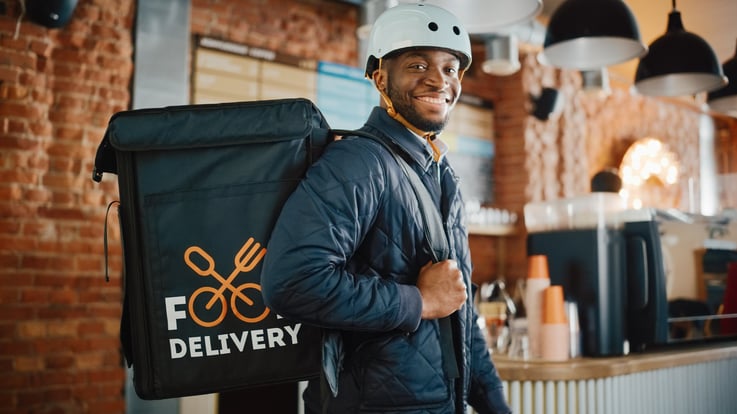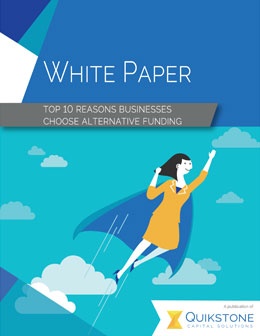 Today, anyone who owns a restaurant knows how difficult it is to make a profit. First, there's the competition. Then there's a lack of loyalty among consumers. Restaurants offer discounts, rewards programs, online ordering, and third-party delivery to entice their customers, further cutting into the bottom line. Profits are slim.
Today, anyone who owns a restaurant knows how difficult it is to make a profit. First, there's the competition. Then there's a lack of loyalty among consumers. Restaurants offer discounts, rewards programs, online ordering, and third-party delivery to entice their customers, further cutting into the bottom line. Profits are slim.
Is Online Ordering A Crucial Part Of The Restaurant Industry? These Statistics Tell The Story.
- 63% of consumers agree that it is more convenient to get delivery than dining out with a family.
- 21% of consumers say they are increasingly replacing carryout orders with delivery orders. That's even higher—30%—for those 18-34 years old.
- 60% of U.S. consumers order delivery or takeout once a week.
- 34% of consumers spend at least $50 per order when ordering food online.
- 20% of consumers say they spend more on off-premise orders than a regular dine-in experience.
- Digital ordering and delivery have grown 300% faster than dine-in traffic since 2014.
The prominent players in the third-party food delivery space are DoorDash, Uber Eats, Grubhub, Postmates, Seamless, Deliveroo, FoodPanda, and BiteSquad.
DoorDash has established itself as the leader in the U.S. market. In 2021, DoorDash was responsible for 58% percent of all food delivery orders, holding a double-digit advantage over everyone else. DoorDash made this leap to the first position by aggressively expanding into markets, sometimes controversially adding restaurants onto the platform before contacting them.
These widely used companies charge between 25 and 40% for orders, and that's usually more than a restaurant's profit. On top of that, they collect valuable customer data, don't share it, and only showcase their branding.
Concern Over High Fees
Not so long ago, these delivery services were considered saviors to many restaurant owners who recognized a need for third-party delivery services. An outside delivery option, they believed, would allow them to focus on food and the customer experience. Initially, the industry welcomed these delivery service operators.
But it didn't take the restaurant industry long to realize that while these services provide additional revenue, not much of that revenue makes it to the bottom line.
A GrubHub statement for Giuseppe Badalamenti, owner of a Chicago food truck, demonstrates the problem with these delivery services. The statement shows that he made $1,042.63 from 46 orders and netted $376.54 after delivery-service fees and commissions. Badalamenti said his earnings are "almost enough to pay for the food."
In April 2020, a group of New York residents sued DoorDash, GrubHub, Postmates, and Uber Eats, saying the delivery services charge "exorbitant fees" that range from 13% to 40% of revenue, while the average restaurant's profit ranges from 3% to 9% of revenue, making delivery meals more expensive for eateries. A date for the trial has not yet been set.
"Restaurants, if they are doing really, really well, might be making a five percent profit margin," Executive Chef Molly Maciejewski told Madison, Wisconsin T.V. station WOKS. "And these companies are sometimes charging 30 percent."
Consumer Complaints
But the negatives don't only affect restaurants. Consumers also pay a hefty price for these services, and then there's the wait time.
Maciejewski said she was surprised when she began hearing complaints from customers who said the food they ordered for delivery either came late or had their orders canceled because the menu items listed on a third-party platform were not actually on her menu. Partnering with a third party may not represent your brand favorably and can damage future sales.
Recently, lawmakers in Wisconsin held a public hearing on a bipartisan bill that would require third-party delivery companies to have a restaurant's permission before posting their menu on the company's platform.
"Our guests aren't happy; our franchises are not happy. The food is delivered cold, or it's not per their order," Steve Anderson, general counsel for Culver's, said. "The prices and menus are always wrong on their websites; they always seem to have items that haven't been on our menu for years."
Beyond Delivery. New Products And Services
In 2022, experts predict restaurants will continue to explore delivery options beyond costly third-party partnerships and hike delivery menu prices to make the channel more profitable as off-premise demand continues to hold steady.
In the meantime, third-party delivery companies are developing new products with new revenue streams.
DoorDash Inc. has filed trademark applications for DashBotics, a robotic food prep and vending system, and two automated restaurant brands - Tex-Mess and Queso Your Way - for restaurant brands prepared by the bots.
Grubhub is also expanding its non-restaurant delivery category called Grubhub Goods. Grubhub's partnership with 7-Eleven is now available nationwide, covering more than 3,000 stores and reaching the "vast majority" of Grubhub users, the company said.
Consider Creating Your Own Delivery Service
Despite the pros and cons of third-party delivery services, no one expects them to go away any time soon. But there are some helpful things restaurants can do. First, negotiate the cost of these services, then begin to develop your brand's online ordering and delivery services.
Our website has a broad range of information and resources to help you grow your business. One of them is a free guide to making smart investments in your restaurant, including developing your own delivery services.
For 17 years, Quikstone has provided easy, fast, and flexible funding for businesses nationwide. Contact us for a free no-obligation prequalification.
We're here for you, and we want to help you succeed.





